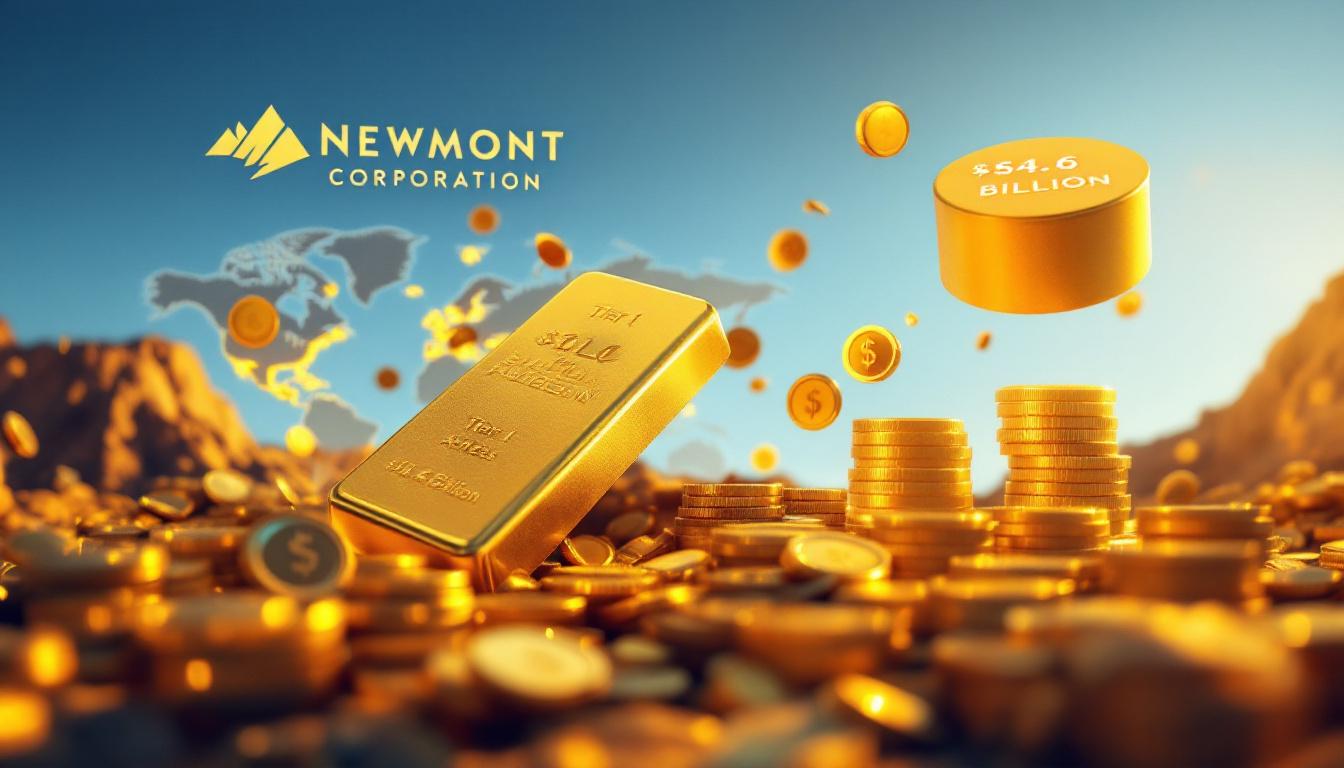How Are Geopolitical Tensions Affecting Silver Prices?
The Recent Silver Price Surge
Silver has catapulted to over $37 per ounce in recent trading sessions, marking its highest level since 2012. This dramatic price movement comes amid a broader precious metals rally that has seen platinum reach decade-high prices, with both metals following gold prices analysis upward trajectory.
John Ince, CEO of Mason Placements, explains the relationship: "Silver has always tracked gold… when there's demand for precious metals, we are seeing a rush into everything that is precious, and that includes silver."
The April 2024 surge demonstrates the volatile nature of precious metals markets during geopolitical crises, with silver prices and Israel Iran tensions exhibiting a pronounced reaction to escalating Middle East tensions.
The Israel-Iran Conflict Connection
The Israel-Iran standoff has created a perfect storm for precious metals markets. As military actions and rhetoric intensify between these regional powers, investors have flocked to traditional safe-haven assets.
This geopolitical risk premium is being actively priced into commodities, with traders particularly concerned about potential supply chain disruptions affecting mining operations and metal transportation routes throughout the region.
"Escalating tensions in the Middle East create market uncertainty that drives investors toward precious metals as a protective measure against potential economic fallout," notes Ince.
Market analysts point out that silver's price movement has been particularly responsive to developments in the conflict, with each escalation triggering noticeable price jumps as uncertainty grows. According to recent market reports, silver prices continue rising amid the intensifying Israel-Iran conflict.
Silver's Relationship to Gold
Historically, silver prices have displayed a strong correlation with gold during periods of geopolitical turmoil. However, silver typically follows a distinctive pattern where it initially lags behind gold's price movement before experiencing a more dramatic catch-up phase.
This current price action showcases this phenomenon perfectly. While gold began its ascent earlier in the year, silver remained relatively subdued before its recent explosive breakout above the critical $30 per ounce threshold.
Industry experts note that silver's catch-up rallies often exceed gold's percentage gains once momentum builds, creating potentially larger opportunities for investors who correctly time the market. Understanding the gold-silver ratio insights can be particularly valuable during these market conditions.
What Makes Silver's Market Dynamics Unique?
Silver's Dual Nature
Unlike gold, which primarily serves as an investment vehicle and store of value, silver's market dynamics are shaped by its dual identity as both precious metal and industrial commodity.
"Silver is an industrial byproduct of zinc production and there are very few pure silver producers in the world," explains Ince, highlighting a fundamental difference in how silver enters the market.
This dual demand profile creates fascinating market bifurcation. Industrial applications account for approximately 50% of silver consumption, while investment demand represents roughly 25%. The remaining usage spans jewelry, silverware, and other specialized applications.
This industrial component adds a cyclical element to silver prices that isn't present in gold, creating both challenges and opportunities for investors trying to forecast price movements.
Supply Fundamentals
Silver's supply chain presents unique constraints that gold miners don't face. With less than 30% of global silver coming from dedicated silver mines, the metal's production is largely dependent on the mining economics of base metals, particularly zinc.
This byproduct status significantly limits production flexibility. When silver prices rise, miners can't simply ramp up silver production—they remain constrained by zinc market fundamentals and existing mining operations.
The situation is further complicated by geographic concentration. In 2023, zinc production shortfalls in Peru—a key silver-producing region—reduced silver output by 18%, demonstrating how base metal mining disruptions can unexpectedly impact silver availability.
Additionally, silver recycling rates hover around 20%, dramatically lower than gold's approximately 90% recovery rate, removing an important supply buffer during periods of high demand.
Price History and Potential
While current prices represent multi-year highs, silver remains well below its all-time record of approximately $50 per ounce reached briefly in 2011 (and previously in 1980 during the Hunt brothers' attempted corner of the market).
This historical context suggests significant upside potential remains, though market analysts maintain measured expectations about near-term price targets.
Technical analysts point to the $40-42 range as the next significant resistance level, with price volatility expected to continue tracking developments in the Middle East and broader macroeconomic policies.
How Are Central Banks Influencing Precious Metals Markets?
Recent Central Bank Decisions
Both the Federal Reserve and Bank of England have maintained steady interest rates in their most recent policy meetings, with both signaling potential rate cuts later in the year. This cautious approach reflects the complex balance central bankers must strike in the current environment.
"Central banks are telegraphing a holding pattern with no clear leadership due to unprecedented tariff situations," observes Ince, highlighting the reactive posture many monetary authorities have adopted.
The CME FedWatch tool currently shows markets pricing in a 65% probability of at least one rate cut by December 2024, with expectations for further easing in 2025 if inflation continues moderating.
Impact on Precious Metals
Low interest rate environments have historically provided a supportive backdrop for precious metals, particularly silver and gold. When rates decline, the opportunity cost of holding non-yielding assets like precious metals decreases, making them relatively more attractive to investors.
The anticipated shift toward monetary easing later in 2024 has already begun influencing investor positioning in precious metals markets. The 2023 Fed pause, for instance, preceded a 22% annual silver rally, illustrating the metal's sensitivity to interest rate expectations.
Central bank conservatism also reflects broader economic uncertainties, with monetary policy increasingly reactive to geopolitical events that could disrupt global trade and financial systems.
Inflation Concerns
Proposed tariffs of 10-15% on various imported goods could potentially add 2.3% to consumer price inflation, according to economic analyses cited by market experts. This inflationary pressure creates additional tailwinds for precious metals.
"Tariffs are inflationary and there's no question that they also hurt economic growth," Ince explains, describing the challenging environment central banks must navigate.
Precious metals have traditionally served as inflation hedges, with silver offering both the inflation protection of gold and the industrial demand component that could benefit from infrastructure spending and green energy initiatives that often accompany economic stimulus measures.
The US dollar's recent 10% correction further supports precious metals prices, as dollar-denominated commodities become relatively less expensive for holders of other currencies.
How Is Oil Responding to Middle East Tensions?
Recent Oil Price Movements
Oil prices surged above $78 per barrel following the escalation of the Israel-Iran conflict before easing slightly as immediate supply disruption fears moderated. This volatility illustrates the energy market's sensitivity to developments in this strategically crucial region.
Market speculation about potential US involvement has added another layer of complexity to oil price movements, with traders attempting to gauge the likelihood and extent of American military engagement that could further destabilize regional oil production and transportation.
The pattern of rapid price spikes followed by gradual easing mirrors previous episodes of Middle Eastern tensions, though with different underlying market fundamentals than past crises. As the Israel-Iran tensions impact global oil prices, investors are closely monitoring developments in the region.
Supply Risk Assessment
The Strait of Hormuz represents a critical chokepoint in global oil markets, with approximately one-third of global oil supply passing through this narrow waterway between Iran and the Arabian Peninsula.
"One-third of the world's supply comes through the Strait of Hormuz," notes Ince, underscoring the vulnerability of global energy markets to disruptions in this region.
Any blockage or shipping disruption through this vital corridor could trigger substantial price increases, potentially driving oil toward the $100 per barrel threshold last seen consistently in the early 2010s.
Historical precedent supports this concern—the 2019 Hormuz tanker attacks caused immediate $12 per barrel price spikes, and similar scenarios remain entirely plausible in the current geopolitical climate.
Comparing Current and Historical Oil Markets
Despite superficial similarities to previous oil price spikes, today's market exhibits fundamentally different dynamics than previous $100+ environments. Global crude inventories now cover approximately 65 days of consumption, compared to just 45 days during the 2011 price spikes, providing a significantly larger buffer against supply shocks.
OPEC+ compliance issues have created additional complexity, with several member nations exceeding production quotas and undermining the cartel's traditional price discipline mechanisms.
Demand patterns have also evolved, with electric vehicle adoption now displacing an estimated 1.8 million barrels per day compared to 2015 consumption models. This structural shift places downward pressure on long-term oil demand forecasts.
New production sources, particularly Guyana's rapidly expanding output (reaching 500,000 barrels per day in 2024), have added significant non-OPEC supply to global markets, reducing vulnerability to Middle Eastern disruptions.
What Investment Strategies Work During Geopolitical Uncertainty?
Portfolio Positioning for Volatility
Investment professionals recommend reducing exposure to highly-valued technology stocks during periods of heightened geopolitical tension. Tech equities with double-digit price-to-earnings ratios have shown particular vulnerability to sentiment shifts during crisis periods.
"Cash provides flexibility during market dislocations; gold stocks look particularly appealing as markets appear fully valued," advises Ince.
Defensive asset allocation—increasing exposure to consumer staples, utilities, healthcare, and select commodities—has historically provided greater portfolio stability during similar periods of uncertainty.
Gold mining equities have outperformed the Nasdaq by approximately 14% year-to-date, demonstrating their relative strength during this period of heightened geopolitical risk.
Risk Management Approaches
Gold positions are increasingly viewed as effective hedges against both geopolitical instability and potential policy shifts. Ince describes gold as "the best Trump trade around," referring to how gold might perform under certain policy scenarios, though he cautions it has become a somewhat crowded trade.
Effective risk management strategies include:
- Selling overvalued positions with extended P/E ratios
- Maintaining higher-than-normal cash reserves (15-20% vs. typical 5-10%)
- Utilizing options strategies to hedge downside risk in core holdings
- Implementing trailing stop orders to protect gains while maintaining upside exposure
Many professional investors are also preparing contingency plans for potential market corrections triggered by further escalation in the Middle East conflict.
Currency and Commodity Correlations
The US dollar has experienced a significant 10% correction, altering traditional correlations between currencies and commodities. This dollar weakness has provided additional support for dollar-denominated commodities like silver and gold.
Higher interest rates have increased borrowing costs globally, particularly affecting emerging markets with dollar-denominated debt. This has created interesting divergences in commodity demand patterns across different regions.
The potential implementation of what some analysts describe as "the highest tariffs since the Great Depression" would likely accelerate these correlation breakdowns, requiring investors to reassess traditional asset relationship models.
Risk premiums for dollar-denominated assets have increased, with the VIX volatility index remaining elevated compared to historical averages, reflecting persistent uncertainty in global markets.
What Are the Long-Term Implications for Commodity Markets?
Economic Growth Concerns
Recent economic data presents a mixed picture, with retail sales showing signs of slowing in major economies while employment figures remain inconsistent across sectors and regions.
"You look at some of the employment numbers—there's a lot of mixed data," notes Ince, highlighting the challenge of forming clear economic projections.
Advance stocking ahead of potential tariff implementation has distorted demand patterns, creating artificial demand surges that may reverse once tariffs are either implemented or abandoned. This phenomenon makes interpreting current consumption data particularly challenging.
Central banks face an increasingly complex growth-inflation balance, with the traditional tools of monetary policy potentially less effective in an environment shaped by geopolitical risk rather than conventional economic cycles.
Tariff and Trade Tensions
The possibility of implementing what some analysts describe as "the highest tariffs since the Great Depression" introduces significant uncertainty around implementation timelines, scope, and ultimate economic impact.
These potential trade barriers carry inflationary implications that could benefit precious metals as inflation hedges, while simultaneously creating economic growth headwinds that might eventually dampen industrial demand for commodities like silver.
The complexity is further increased by second-order effects, as trading partners implement retaliatory measures and global supply chains undergo structural realignments to adapt to the new trade landscape. Understanding the tariffs impact on markets and specifically the tariffs on silver prices is crucial for investors in the current environment.
Evidence of advance inventory building is already appearing in shipping and warehousing data, as manufacturers and retailers attempt to mitigate potential tariff impacts by accelerating imports ahead of implementation deadlines.
Investment Outlook
Cash positions provide valuable safety and flexibility during periods of heightened uncertainty, with many professional investors maintaining above-average liquidity to capitalize on potential market dislocations.
Gold and select gold mining stocks continue showing appeal as both geopolitical and inflation hedges, with companies exhibiting strong balance sheets and production growth attracting particular interest.
The broader markets appear fully valued by traditional metrics, suggesting caution for investors considering new allocations to mainstream equity indices.
The geopolitical risk premium is likely to remain embedded in commodity prices until a clear resolution emerges in current Middle East tensions, creating a supportive floor for precious metals regardless of incremental developments.
FAQ About Silver Prices and Geopolitical Tensions
Will Silver Prices Reach $50 Per Ounce Again?
While silver has surged to multi-year highs above $37 per ounce, market analysts suggest the path to previous all-time highs near $50 remains challenging. Current price action shows strong momentum, but different market fundamentals than previous price peaks may limit immediate potential to reach those levels.
Silver's all-time high of approximately $50 occurred briefly in 1980 during the Hunt brothers' attempted market corner and again momentarily in 2011 during extreme market conditions. Today's environment features stronger industrial demand but more disciplined investment flows, creating a different path to potential new highs.
How Do Tariffs Affect Precious Metals Prices?
Tariffs typically create inflationary pressures while potentially slowing economic growth. This combination often benefits precious metals as inflation hedges while their safe-haven status attracts investors concerned about economic uncertainty. The potential for "highest tariffs since the Great Depression" could continue supporting precious metals prices.
Additionally, tariffs on imported mining equipment could increase production costs for silver miners, potentially supporting prices through higher cost floors for producers. Supply chain disruptions from trade restrictions might also reduce available inventory, creating spot market premiums during periods of high demand.
What Would Trigger $100 Oil Prices?
A significant disruption in the Strait of Hormuz, through which one-third of global oil supplies pass, could potentially drive oil toward $100 per barrel. However, current market conditions including increased production from regions like Guyana, OPEC+ compliance issues, and changing demand patterns create different fundamentals than previous $100+ environments.
Historical price spikes to $100+ occurred during periods of tighter inventories, stronger demand growth, and less diversified supply. Today's market features larger buffers against disruption, though a prolonged blockage of major shipping routes could still overcome these structural changes to push prices significantly higher.
How Are Central Banks Responding to Current Market Conditions?
Central banks including the Federal Reserve and Bank of England are maintaining a cautious approach, holding interest rates steady while signaling potential cuts later in the year. This conservative stance reflects uncertainty around inflation, growth, and geopolitical developments, with monetary authorities unlikely to provide strong directional leadership in the near term.
The traditional central bank playbook for managing inflation through interest rate adjustments has become more complicated by supply-driven inflation components related to geopolitical tensions and potential trade restrictions, creating a more nuanced policy environment than typical economic cycles.
Disclaimer: This analysis contains forward-looking statements about commodity prices and market conditions. These statements represent opinions rather than facts and are subject to risks, uncertainties, and changes in circumstances that are difficult to predict. Readers should not rely solely on this information for investment decisions and should consult with qualified financial advisors.
Butler University professor of economics and finance Matthew Williams, Ph.D. notes: "The current silver market presents a fascinating case study in how geopolitical tensions reshape traditional supply-demand dynamics. While I expect continued volatility, the fundamental case for sustained higher silver prices remains compelling given the confluence of industrial demand growth and investment flows seeking inflation protection."
As silver squeeze strategies continue to evolve in response to these market conditions, investors should stay informed about the latest developments in both geopolitical tensions and silver market dynamics. Additionally, as noted in the Economic Times, silver prices and Israel Iran tensions remain closely intertwined as the conflict intensifies, with silver rallying to fresh peaks.
Ready to Capitalise on the Next Major Mineral Discovery?
Don't miss out on the significant potential returns that major mineral discoveries can generate for savvy investors. Explore Discovery Alert's dedicated discoveries page to understand the historical performance of exceptional finds, and begin your 30-day free trial to receive instant notifications powered by their proprietary Discovery IQ model at https://discoveryalert.com.au/discoveries/.




